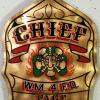Sign in to follow this
Followers
0

Triangle Shirtwaist Fire 99 years ago today
Started by
CPAGE,
-
Recently Browsing 0 members
No registered users viewing this page.

Started by
CPAGE,
No registered users viewing this page.